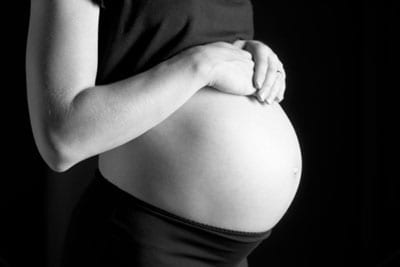Exercising during pregnancy is a wonderful way to cope with normal aches and pains and prepare your body for labor and delivery. Exercise is perfectly safe during a normal pregnancy, and most exercises can be done with only minor changes to adapt to the needs of a pregnant body.
When is Exercise Safe During Pregnancy?
Exercise is safe for the entire pregnancy provided there are no complications that require inactivity. Any bleeding in early pregnancy is often a reason to slow your activity level until things calm down. A woman with a history of preterm labor should discuss her exercise routine with her doctor to be sure that it’s safe for her medical needs. Women can exercise until the day they deliver during a normal pregnancy. During the last few weeks of pregnancy, walking is actually a wonderful way to encourage the body to prepare for labor and help progress labor that has stalled.
What Exercises are Not Safe During Pregnancy?
The main risk for exercising during pregnancy is any activity that puts an expectant mother at risk of falling or being hit in the stomach. Biking may be safer if done on a stationary bike. Skiing or snowboarding increases the risk of injury to the baby and should generally be avoided during pregnancy. Jogging is safe in moderation but may become uncomfortable as the pregnancy progresses–and it should be done carefully, as any bouncing motion could trigger cramping and preterm labor. The risk of falling or slipping, especially during the winter, is greater while jogging than walking and should be considered. After the first trimester, a pregnant woman should avoid exercises that place her on her back. This will limit the amount of oxygen that her baby will receive.
How Much Exercise is Safe?
Generally, an expectant woman is safe to continue the exercise routine that she had in place before she became pregnant. If a woman is active, she can safely continue her activity level with the approval of her doctor and if she avoids becoming overly tired. A woman who was inactive before pregnancy but wants to start exercising to improve her health can begin a slower-paced exercise routine after checking with her doctor.
What Precautions Should be Taken While Exercising During Pregnancy?
An expectant mother should be mindful of her own limitations and the needs of her pregnancy during exercise. Dehydration can happen quickly, because a pregnant woman needs extra fluids. Drinking plenty of water before, during and after exercising will help prevent dehydration and the risks that it presents to a pregnancy. It is important for a pregnant woman to try to keep her heart rate below 140 beats per minute. Exercising to exhaustion is unsafe for both the expectant mother and baby, and should be avoided.
What Exercises are Safe During Pregnancy?
Low-impact exercises are ideal for pregnancy. Walking and swimming are great exercises for an expectant mother; these will allow a full body workout without risk to mother or baby. Yoga can be very calming for the mother. Many recreation centers and gyms offer prenatal yoga classes. Simple, low-impact exercises can help relieve the aches and pains of pregnancy and prepare an expectant mother for the birth of her baby.





